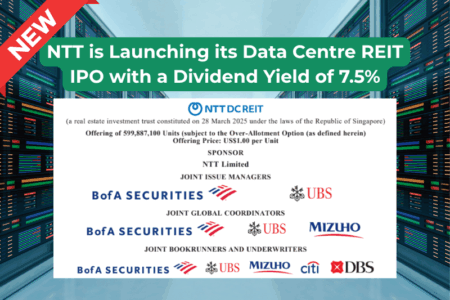The world of streaming television is becoming more competitive.
Apart from Netflix (NASDAQ: NFLX), new players such as Disney (NYSE: DIS) and Amazon (NASDAQ: AMZN) are introducing streaming TV services to capture a slice of the lucrative pie.
The customer is the one who benefits as he or she now has a plethora of entertainment choices.
For market leader Netflix, its share price recently jumped by nearly 16% after reporting its latest set of financial results.
Does this leap signify continued success for the streaming giant, or could it be a value trap that investors should avoid?
Let us dig deeper into Netflix’s business to find out.
A sparkling set of numbers
Netflix’s third-quarter 2023 (3Q 2023) saw revenue continue its upward climb, rising by 7.8% year on year to US$8.5 billion.
The company’s operating margin continued to rise, inching up to 22.4% from 22.3% in the previous quarter, and is now the highest in five quarters.
Net profit came in at US$1.7 billion, up 20% from a year ago.
Netflix also increased its free cash flow guidance to around US$6.5 billion, up from its prior forecast of US$5 billion.
For the first nine months of 2023 (9M 2023), the streaming giant already generated US$5.4 billion of free cash flow.
Meanwhile, Netflix’s streaming paid memberships hit 247.2 million for 3Q 2023, up 10.8% year on year and at a new record high.
The addition of 8.8 million new members is a sea change from the quarter-on-quarter loss in subscribers that the company experienced in the second quarter of last year.
Wall Street had projected subscriber additions of just 5.5 million, so Netflix’s numbers blew expectations out of the park.
Hovering high above its competitors
Investors should note that Netflix commands the largest proportion of US TV screen time compared to its closest competitors.
According to research firm Nielsen, the company had the most watched original series for 37 out of the first 38 weeks of 2023 and the most watched movie in 31 out of these 38 weeks.
For September 2023, streaming took up 37.5% of US TV screen time.
Netflix’s share stood at a high of 7.8%, more than double that of Amazon’s 3.6% and more than four times of Disney’s 1.9%.
Moreover, Netflix will be increasing the prices of two of its ad-free plans by several dollars, going from US$9.99 to US$11.99 per month for the basic plan and US$19.99 to US$22.99 for the premium plan.
Competitors such as Disney Plus, Hulu, and Prime Video have also increased their subscription prices, with ad-free bundles jumping as much as 60% depending on the type of plan.
With Netflix’s larger share of screen time, this means that viewers will also be less sensitive to price increases and not switch to rival networks.
Broadening its content slate and opening physical stores
Netflix already boasts an impressive content slate.
But the streaming giant plans to broaden it further with the announcement of a multi-year agreement with Skydance Animation, which will help develop and produce animated movies on Netflix’s platform from 2024 onwards.
The business is also increasing its sports shoulder programming with a wide variety of sports dramas available on its platform.
These include docuseries and/or documentaries on famous sports celebrities such as David Beckham.
Management also wants to up its engagement by several notches by developing a physical store called “Netflix House” over the next few years.
These stores will feature fresh, new live experiences combined with food and retail that Netflix hopes will attract fans to come back again and again, each time with the promise of a fresh experience.
Catalysts to watch for
Aside from expanding its content and developing new ways to engage its members, investors should also watch for these catalysts.
Netflix’s paid sharing saw a low cancellation rate as many households converted to full-paying memberships.
With high retention rates, Netflix can now monetise these additional accounts to add to its burgeoning subscriber base.
The company plans to continue converting these borrower households over the next few quarters, an action that could see continued healthy additions to its subscriber numbers.
Elsewhere, Netflix’s ad-free tier has been launched for less than a year but has seen healthy traction.
Management believes that over time, its ad-tiered business could become a multi-billion-dollar revenue stream.
Get Smart: Growth catalysts in place
Netflix not only enjoys a strong market position but is also intent on further expanding its content slate to improve engagement.
The company has grand plans in the next few years to open physical stores and is partnering with content producers to increase the variety of movies and TV series on its platform.
The streaming giant’s share price may have jumped sharply in one day, but there could be room for further long-term appreciation if its corporate strategies pan out well.
If you’re wondering about how you can leverage AI in your investment portfolio, and how it can boost your portfolio, good news! We just released an urgent Special Free Report to cover everything you need to know about AI and its implications for investors. Find out which listed companies are actively using AI to power their businesses and what you should do to prepare for the AI boom. Click here to download your free report now.
Follow us on Facebook and Telegram for the latest investing news and analyses!
Disclosure: Royston Yang does not own shares in any of the companies mentioned.





